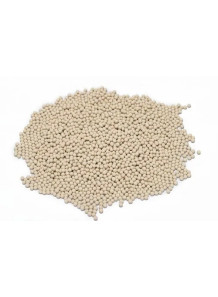Molecular Sieve (pellets, 3-5 mm)
- Product Code: 32544
Molecular Sieve It is a crystalline and porous material that is commonly used in various industrial processes. To choose to absorb or separate molecules according to their size and polarity. It has a highly uniform and uniform pore structure.
Molecular Sieve It is a crystalline and porous material that is commonly used in various industrial processes. To choose to absorb or separate molecules according to their size and polarity. It has a highly uniform and uniform pore structure.
Molecular Sieve (pellets, 3-5 mm)
Molecular Sieve It is a crystalline and porous material commonly used in various industrial processes. To choose to absorb or separate molecules according to their size and polarity. It has a highly uniform and uniform pore structure.
Important characteristics and applications of molecular sieves:
1. Pore structure: The molecular sieve has a clear and uniform pore structure with a specific pore size. These pores typically have a diameter of 3 to 10 angstroms (Å). The uniformity of the pores allows for the selective adsorption of molecules that can be introduced into the pores. excluding larger molecules
2. Adsorption and Adsorption: Molecular sieves have a high affinity for certain molecules due to their size and polarity. When in contact with a gas or liquid mixture They absorb molecules that can enter the pores. Subsequently, these adsorbed molecules can be adsorbed (released) by changing the temperature or pressure conditions.
3. Dehydration: One of the most common uses of molecular sieves is to remove water from liquids or gases. Molecular sieves can selectively adsorb water molecules from ingredients. As a result, the remaining substances become dehydrated. This is especially useful in drying gases such as natural gas and air. or in the production of dry solvents
4. Gas Separation: Molecular sieves are used to separate gases based on their size and polar properties. For example, they can be used to remove carbon dioxide (CO2) or water vapor from a gas stream. or to separate hydrocarbons of different sizes in petrochemical processes.
5. Air purification: Molecular sieves are used in air purifiers and oxygen generators to selectively absorb nitrogen from the surrounding air. This results in the production of high purity oxygen.
6. Catalysis: In some catalytic processes. Molecular sieves are used as supports or promoters of catalysts. It can help control the access of reactants to the active catalytic site. and improve the selectivity of chemical reactions.
| Mechanism | - |
| Appearance | - |
| Longevity | - |
| Strength | - |
| Storage | - |
| Shelf Life | - |
| Allergen(s) | - |
| Dosage (Range) | - |
| Recommended Dosage | - |
| Dosage (Per Day) | - |
| Recommended Dosage (Per Day) | - |
| Mix Method | - |
| Heat Resistance | - |
| Stable in pH range | - |
| Solubility | - |
| Product Types | - |
| INCI | - |
Purchase History for
Cart
No products



